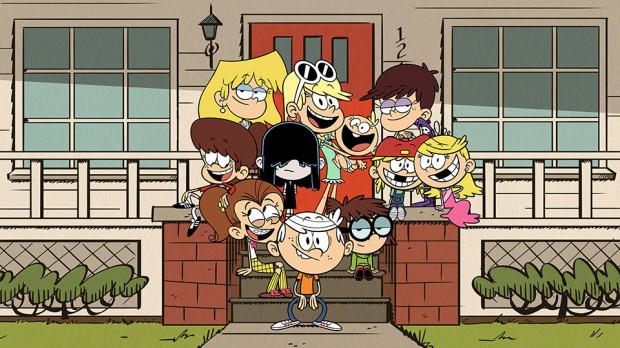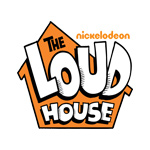
Chris Savino’s real-life experiences and his love of comic-strip esthetics infuse Nickelodeon’s new comedy series The Loud House.
Chris Savino grew up in a family of 10 children, so he knows at least a little about how to avoid the mass chaos that sometimes plagues cartoon series that is serving him well as the creator and executive producer of The Loud House, an animated family comedy series premiering May 2 on Nickelodeon.
“The rule on the show is this: You make the step in process behind you better, and the process ahead of you easier,” says Savino, a 25-year animation veteran. That means people at each step of production tries to leave the show better than they found it — from storyboard artists building on the script to animators building on the boards to the sound and music building on the animation.
“I don’t have directors, per se, and I don’t really have supervisors, per se,” says Savino, who started out getting a job as a teenager on Ren & Stimpy at Spumco by faxing drawings to John Kricfalusi. Since then, his credits have ranged from Hey, Arnold! and Duckman to Johnny Test and Kick Buttowski: Suburban Daredevil and now to his first creator credit on The Loud House, a series about a boy named Lincoln Loud who lives in a family with 10 siblings — all girls. “So I kind of oversee the whole show. I direct the whole show. It’s just one unified vision for the show, I suppose.”
Growing Pains
That vision came about in a sort of sideways manner, says Savino, who first pitched The Loud House as a series about rabbits instead of people because standards and practices is typically stricter with human characters.
“I thought it’d be funny to have an 11-year-old rabbit with 25 sisters who are all the same age because they’re all from the same litter,” says Savino. But when development exec Jenna Boyd pulled him aside and suggested making the characters human, it changed everything for Savino.
“We brought the number of sisters down from 25 to 10 to seem plausible and that’s when I started connecting it to my childhood and my experiences growing up in a family with 10 kids — five sisters and four brothers,” he says. “It brought a relatability and a realness and a genuineness to it that I don’t think I would have injected into the slapsticky kind of funny animal version of it.”
Suddenly, Lincoln’s sisters’ names all matched Savino’s sisters’ names; Lincoln was named for the street Savino grew up on and his address — Franklin Street — comes from the name of Savino’s elementary school.
“These were little things that I felt were touches of my reality brought into the show that make it feel a little more authentic,” he says. “It’s not autobiographical in any real sense, but the experience kind of is. Whereas Lincoln, he jumps into the fray and has a plan of action, I was the kid that kind of pulled myself out of the fray and went off into my own little space and drew.”
Inky Inspiration
The look of the show came from Savino’s pre-animation ambitions to be a comic strip artist.
“In my 25 years of working in animation, I’ve always had this nagging feeling at the back of my head that I’ve turned my back on my love of comic strips,” he says. “Not that I stopped reading them, but the desire to pursue selling one. … In essence, The Loud House is kind of a love letter to comic strips.”
While having 11-plus characters in each episode made a real hand-drawn animated look impossible, it did point the production toward Harmony as the main tool. The technical limitations and the comic strip esthetic also led to esthetic decisions like keeping the camera at a constant level so animators could concentrate on animating instead of tweaking models to match a particular camera angle, he says.
“It’s become kind of a mantra on the show: The camera is not funny; the characters are funny. Leave the camera be, and it’ll be OK,” says Savino.
The comic strip esthetic also led to a limited color palette that matches that used in printing Sunday comics pages and to scanning in old newsprint to add as a texture to backgrounds — a process that revealed surprising strengths.
“We yellowed the paper to make it seem like a really old comic, but that yellowing warmed up the scenes and kind of tied all the colors together in a way that I didn’t expect,” Savino says. “As soon as you tie them all together with the same texture underneath, they all look like they go together.”
Which is a great way to describe not just The Loud House, but families in general.




 Win a Funko X Lilo & Stitch Prize Pack!
Win a Funko X Lilo & Stitch Prize Pack! 
